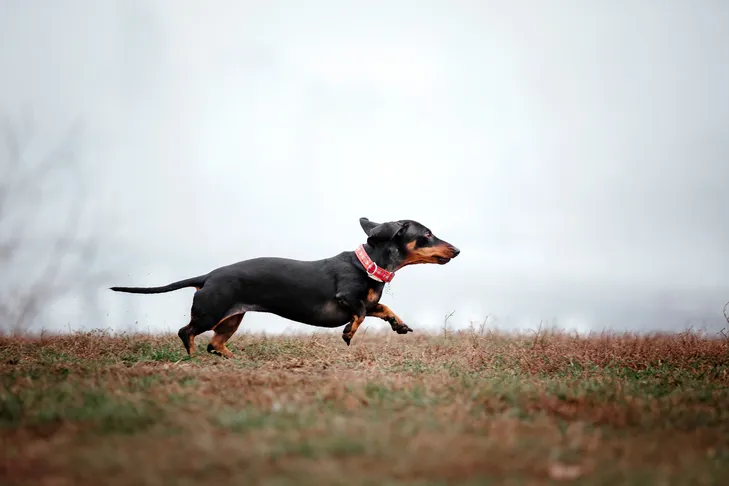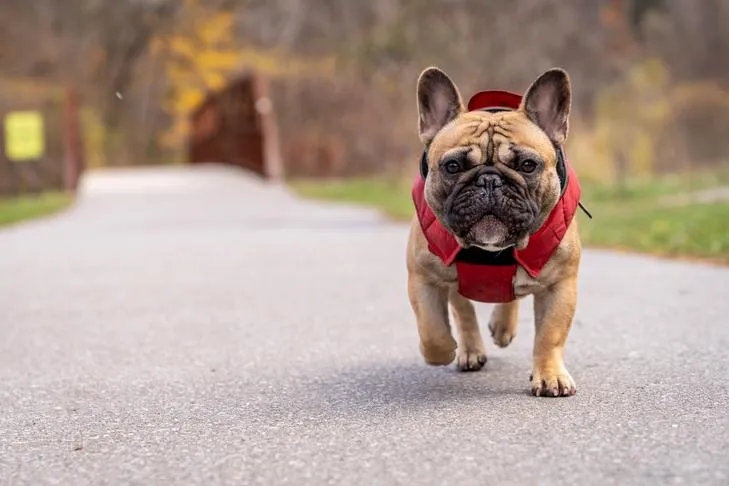Every dog owner dreams of a dog that reliably returns when called, instantly stopping whatever captivating distraction has captured their attention. It’s a common scenario to see an owner repeatedly calling their dog while the pup remains engrossed in a fascinating scent or distant object. This “come” command, or recall, is a significant request, expecting your dog to abandon their current activity and return to you immediately. More than just a convenience, knowing How To Teach Your Dog To Come No Matter What is a potentially life-saving skill, crucial for their safety in unforeseen emergencies. Mastering a reliable recall means you can trust your dog to respond to your call, ensuring their well-being in any situation. For puppies, starting early with basic commands can set a strong foundation, and integrating playful training into their routine can make the process more effective. You can explore a comprehensive first week with a new puppy schedule to lay the groundwork for a well-behaved companion from the start.
Laying the Foundation: Name Recognition and Collar Grabs
Before diving into the “come” cue, your dog needs to understand some foundational concepts. Teaching them their name and making collar grabs a positive experience are crucial first steps that build trust and responsiveness, paving the way for a solid recall.
The Name Game: Getting Your Dog’s Attention
Your dog’s name should be a powerful signal that means, “Pay attention to me; something good is about to happen.” This association is vital because a dog that acknowledges your presence is much more likely to respond to subsequent commands. To teach your dog their name effectively, start in a quiet environment with minimal distractions. Say their name in a happy, engaging tone, and the moment they look at you, reward them immediately with a high-value treat and enthusiastic praise. Repeat this many times in short, positive sessions. Gradually, increase the duration they maintain eye contact before receiving the reward. This consistent positive reinforcement will teach your dog that hearing their name consistently leads to good things, ensuring they are always attentive when you call.
Within a short period, your dog will develop an immediate readiness to focus on you whenever their name is called, anticipating a potential reward. This focused attention is the very first step toward ensuring a dependable recall response in any environment.
‘Gotcha!’: Making Collar Grabs Positive
Many dogs instinctively pull away when you reach for their collar, which can be problematic in an emergency. The “gotcha” game aims to turn collar grabs into a positive experience, teaching your dog that being held by the collar leads to something enjoyable. This exercise is also invaluable for everyday situations, such as clipping on a leash for a walk or guiding them to the bath without a struggle.
To start, lure your dog close with a highly exciting treat. As they approach, allow them to lick or nibble the treat, but don’t give it to them entirely yet. Gently say “gotcha,” and slowly, softly take hold of their collar. Once you have a secure grip, release the remaining treat so they can enjoy it. Over time, as your dog becomes more comfortable, gradually increase the speed and firmness of your collar grabs. Eventually, you should hold the treat until after you’ve said “gotcha” and have a firm grip on their collar. Practice this in various locations, always associating the collar grab with a delicious reward.
Once your dog associates collar grabs with positive reinforcement, you’ll find it much easier to handle them, especially after they perform a recall. It defeats the purpose of a perfect “come” if your dog then bolts away the moment you try to take hold of their collar. This foundational training ensures they remain calm and cooperative when you need to physically secure them.
 A Cavalier King Charles Spaniel dog sits calmly in a crosswalk at a park, demonstrating good obedience.
A Cavalier King Charles Spaniel dog sits calmly in a crosswalk at a park, demonstrating good obedience.
Mastering the “Come” Command: Step-by-Step Recall Training
With name recognition and positive collar grabs established, you’re ready to teach the actual recall command. The secret to success lies in making yourself the most exciting and rewarding thing in your dog’s world. If you’re the source of all fun, your dog will naturally want to come and investigate. Conversely, if your tone is angry, harsh, or even just unenthusiastic, there’s little incentive for them to return. Begin your training in a calm, distraction-free environment with your dog on a leash to make it easier for you to be the most engaging element.
The rewards you use are critical; they must be something your dog absolutely adores, whether it’s a high-value treat like chicken or a favorite game of tug-of-war. Make their effort so worthwhile that ignoring your call becomes unthinkable.
- Start Close: With your dog only a few feet away, say their name, then “come,” and actively encourage them to approach you. You can pat your legs, make kissy noises, clap your hands, or use any other positive, enticing signals.
- Mark and Reward: The instant your dog approaches you, mark the exact moment with a clicker or a verbal marker like “Yes!” Then, shower them with enthusiastic praise and offer their favorite reward.
- Increase Distance: Once your dog reliably comes when called from a short distance, gradually increase the challenge. Allow your dog to wander to the full length of their leash before calling them back.
- Off-Leash Indoors: Move to a quiet room and allow your dog to be off-leash. To make yourself even more appealing, run backward as you say “come,” as many dogs are naturally motivated by a good chase.
- Vary Locations: Practice your recall training in different rooms of your house to generalize the command, ensuring they understand “come” applies everywhere, not just one specific spot.
- Add a “Sit”: Once your dog consistently runs to you, add a “sit” command as they arrive. Mark, praise, and reward for both coming and sitting. This teaches them to remain stationary when they reach you, preventing them from bouncing away immediately after getting their reward. If you’re looking to expand your dog’s obedience skills, learning how to teach a pitbull to lay down is another excellent step to build on foundational commands.
- Reinforce Collar Grabs: After successfully incorporating the “sit,” periodically add a “gotcha” after they arrive, reminding them that it’s perfectly acceptable for you to gently restrain them.
Ensure that every time your dog comes to you, they are met with abundant praise, affection, playtime, and a treat or toy. This is not the time to be frugal with your rewards. Your dog should perceive coming when called as an incredibly fun and rewarding experience. You can even incorporate recall into games, such as “round robin,” where multiple people take turns calling your dog, or “find me,” where you hide in another room before calling them.
 A happy Dachshund dog runs gracefully through a vibrant green field.
A happy Dachshund dog runs gracefully through a vibrant green field.
Building a Bulletproof Recall: Adding Distractions and Distance
Once your dog reliably rushes to you within the confines of your home, you’re ready to introduce distractions. Begin with minor interruptions, like another pet in the room, someone cooking in the kitchen, or subtly tossing a ball in your hand. Gradually increase the level of distraction as your dog’s reliability grows.
Next, transition your training to outdoor environments, but never allow your dog to roam freely off-leash immediately. Even a dog with a 100% reliable indoor recall may struggle outdoors due to the myriad of new sights, sounds, and smells. Start with your dog on a 6-foot leash and systematically repeat the recall steps you practiced indoors. As they consistently succeed, progressively move to a 20-foot or even 30-foot long line, gradually giving your dog more distance to explore while you maintain control. The long line is not for reeling your dog in if they ignore you, but rather to manage the situation and prevent them from reinforcing the habit of not coming. If your dog gets distracted and ignores your call, simply gather the line as you calmly walk closer to them and try the recall again.
Troubleshooting Your Recall Training
If your dog begins to ignore your calls, it’s a clear sign to troubleshoot your training approach. Many factors can contribute to a dog’s reluctance to come when called, including asking for too much too soon or insufficient motivation. Revisit earlier stages of training, reducing distractions and distance, and ensuring your rewards are highly appealing. Consistency, patience, and positive reinforcement are key to overcoming these hurdles. In time, your dog can develop a reliable recall in almost any setting. However, it’s important to remember that even the most well-trained dog might not be 100% perfect in every single instance. Therefore, always exercise caution and only allow your dog off-leash in safe, enclosed environments where potential dangers are minimized. If your dog shows a tendency to bolt, especially from confined spaces, it’s important to understand the underlying causes and solutions, such as when my dog escapes her crate.
 A French Bulldog wearing a cozy jacket walks confidently down a tree-lined path in a park.
A French Bulldog wearing a cozy jacket walks confidently down a tree-lined path in a park.
Conclusion
Teaching your dog to “come” reliably is one of the most vital commands you can instill, offering both convenience and, more importantly, a critical safety net. By building a strong foundation with name recognition and positive collar grabs, then systematically practicing the recall command by gradually increasing distance and distractions, you can foster a deep level of trust and responsiveness in your canine companion. Remember, consistency, high-value rewards, and a positive attitude are the pillars of successful recall training. While perfection is a lofty goal, a highly reliable recall empowers you to keep your dog safe in a multitude of situations, ensuring they will return to you no matter what the world throws their way. Continue to practice regularly in varied environments, always making yourself the most exciting part of their world.
